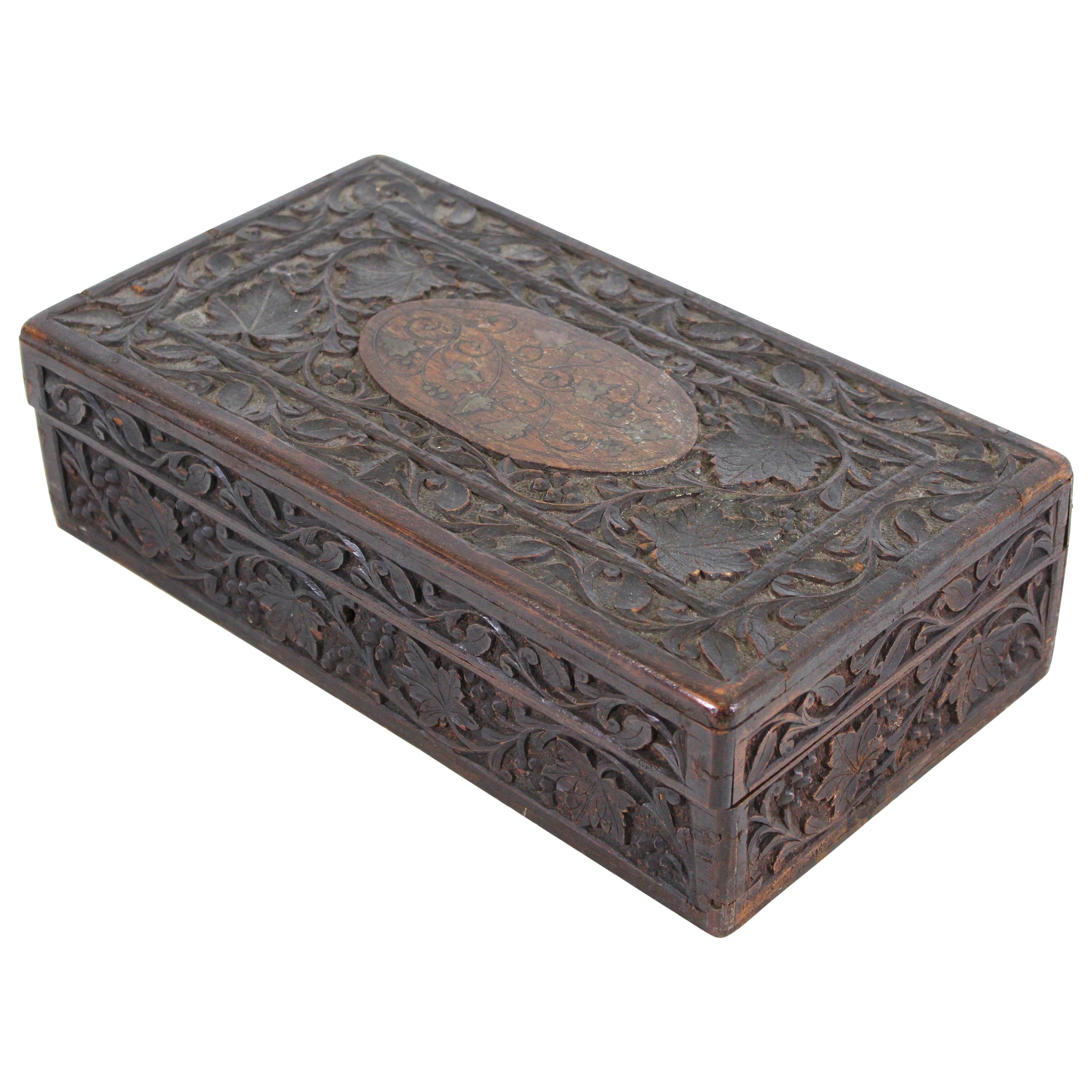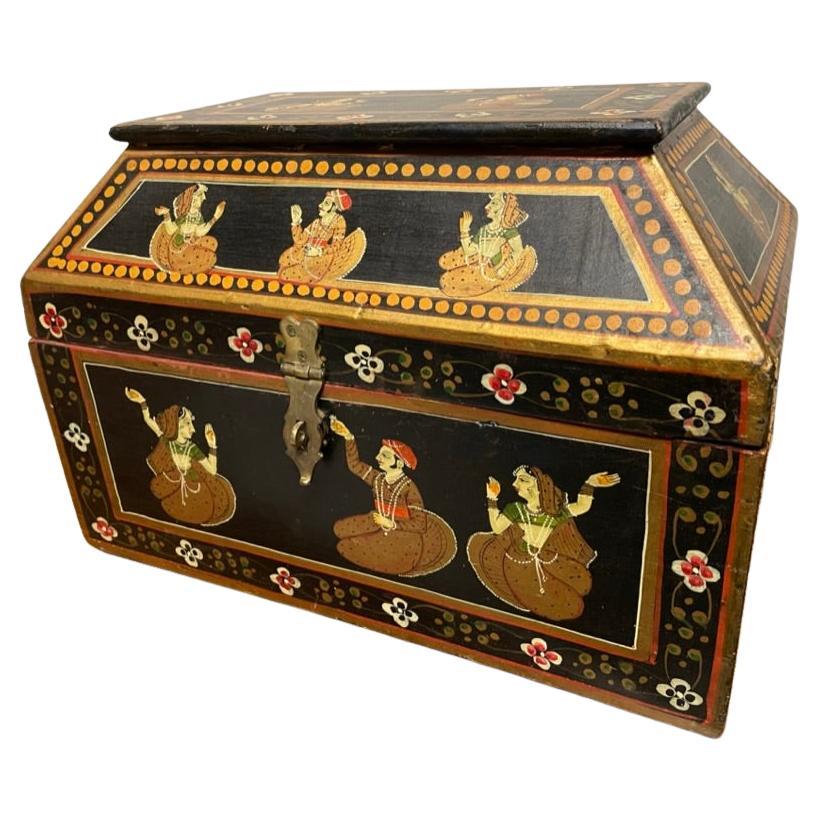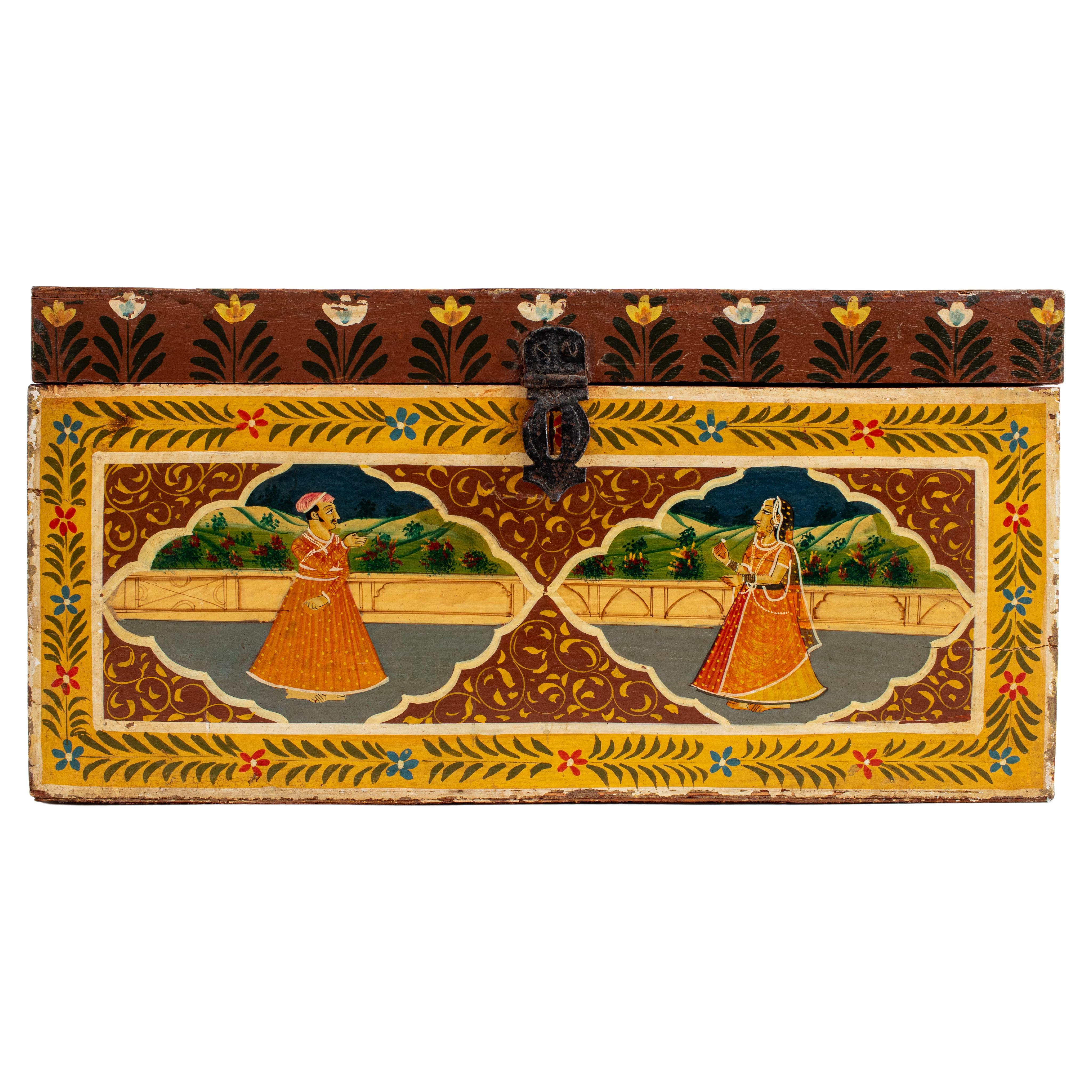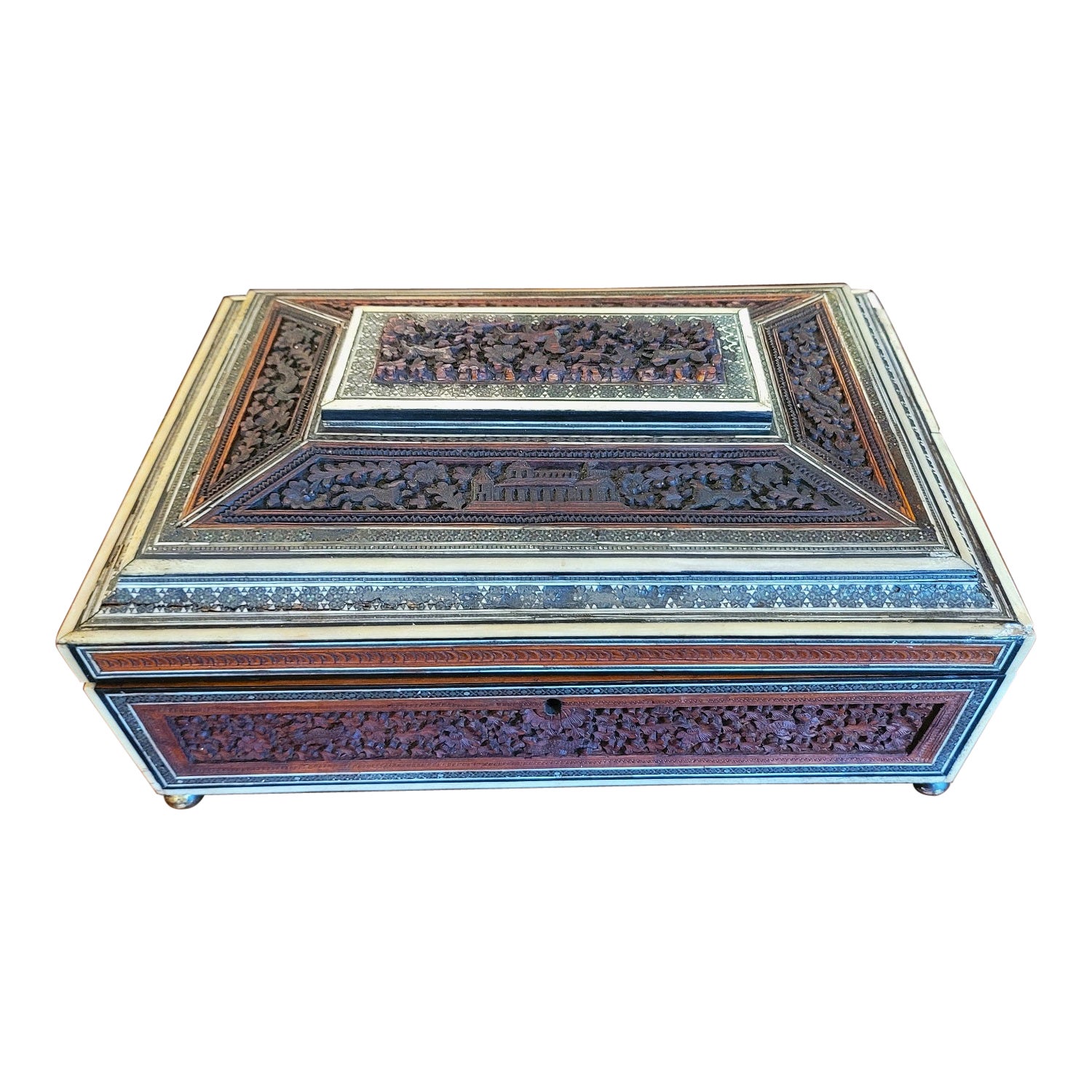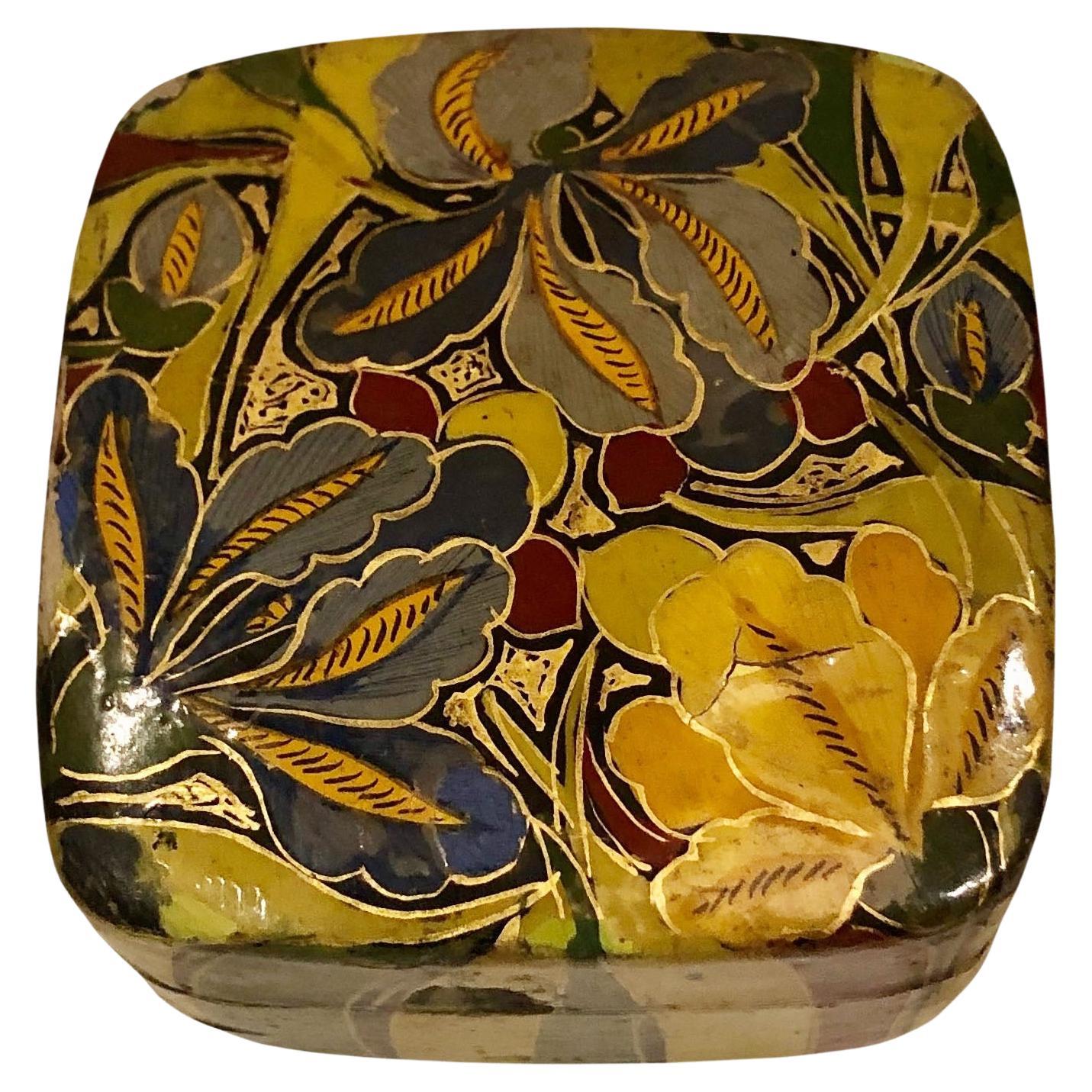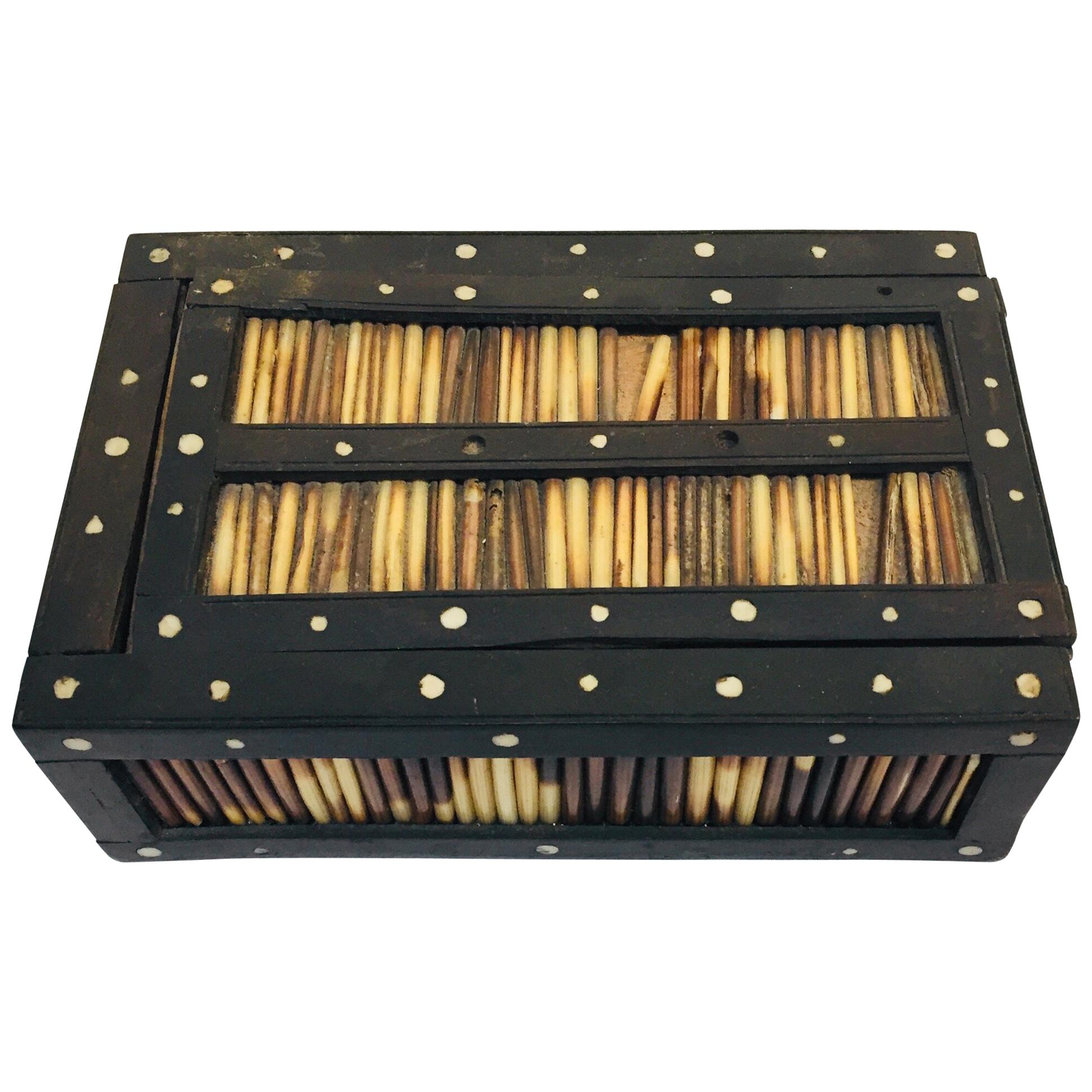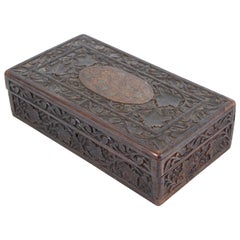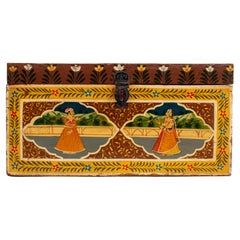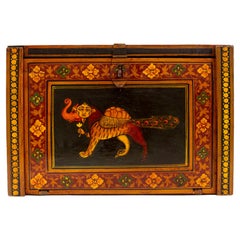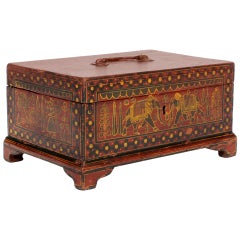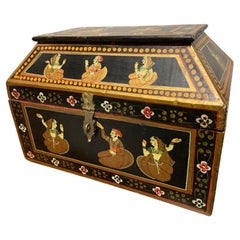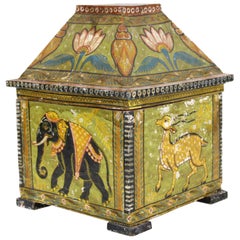
Indian Wood Box with Painted Animal Scenes
View Similar Items
Want more images or videos?
Request additional images or videos from the seller
1 of 8
Indian Wood Box with Painted Animal Scenes
About the Item
- Dimensions:Height: 13.5 in (34.29 cm)Width: 11 in (27.94 cm)Depth: 11 in (27.94 cm)
- Style:Anglo-Indian (In the Style Of)
- Materials and Techniques:
- Place of Origin:
- Period:
- Date of Manufacture:Late 20th Century
- Condition:Wear consistent with age and use.
- Seller Location:New York, NY
- Reference Number:Seller: S138XX - 73771 - 02211stDibs: LU889322426262
About the Seller
4.9
Vetted Seller
These experienced sellers undergo a comprehensive evaluation by our team of in-house experts.
1stDibs seller since 2010
2,432 sales on 1stDibs
Typical response time: 2 hours
More From This SellerView All
- Indian Carved Wood Humidor BoxLocated in New York, NYIndian antique carved wood humidor box with ornamental metal inlay.Category
Early 20th Century Indian Anglo-Indian Cigar Boxes and Humidors
MaterialsWood
$760 Sale Price20% Off - Indian Hand-Painted Chest w/ Courtship SceneLocated in New York, NYIndian hand-painted wooden chest with scene of courtship. Measures: 8.75" H x 17.75" x 9" D.Category
Mid-20th Century Indian Decorative Boxes
MaterialsWood
- Indian Drawer Organizer Storage Box W/ Hand-Painted Chimeras & GaneshaLocated in New York, NYIndian wooden box with hand-painted images of chimeras, Ganesha, and a woman. The box opens to reveal one large drawer and three small ones. The dr...Category
20th Century Jewelry Boxes
MaterialsWood
- Le Tallec French Hand-Painted Porcelain Jewelry BoxLocated in New York, NYLe Tallec gilt and hand-painted Limoges porcelain brass mounted jewelry or trinket box, floral motifs, fully marked underside. Measures: 1.5" H x 3.5" W x 2....Category
20th Century French Belle Époque Decorative Boxes
MaterialsPorcelain
$600 Sale Price20% Off - Gene Jonson & Robert Marcius Dresser-Top Box with Bone and Exotic Wood LidBy Gene Jonson and Robert MarciusLocated in New York, NYA vintage dresser-top box, manufactured circa 1970s by Gene Jonson and Robert Marcius, with an elaborate lid, veneered in exotic woods and inlaid bone, over an octagonal shaped chrom...Category
Vintage 1970s American Organic Modern Decorative Boxes
MaterialsChrome
$1,600 Sale Price42% Off - Indo-Persian Brass Box with LidLocated in New York, NYIndo-Persian brass box with lid decorated with three prongs, bottom of box lined with velvet, incised with figural and floral patterns. .25" H x 8.5" W.Category
20th Century Decorative Boxes
MaterialsBrass
You May Also Like
- Indian Wood Pen Box with Hand Painted Figural ScenesLocated in North Hollywood, CAThe rectangular Indian pen box with domed hinged lid is hand-painted with colorful figural Maharajah court scenes on top and floral designs on each side. Hand painted Rajasthani decorative writing...Category
Mid-20th Century Indian Anglo Raj Jewelry Boxes
MaterialsWood
- Painted Decorated Anglo Indian Box with ElephantsLocated in Palm Beach, FLA very charming Anglo Indian painted decorated box with elephant, people, peacocks and mystical animal motifs, an outside bracket base and a brass...Category
Early 20th Century Indian Anglo-Indian Boxes
MaterialsHardwood
- Anglo Indian Decorative Box with Painted Figures of DancersLocated in Stamford, CTVery decorative hand painted in the Anglo-Indian style. Painted back and gold with each framed panel filled with female dancers and male flower bearing suiters. A colorful and fun, a...Category
Mid-20th Century Indian Anglo-Indian Decorative Boxes
MaterialsWood
- Rajasthani Indian Hand Painted Wood Jewelry Dowry BoxLocated in New York, NYVintage Rajasthani Indian vaulted dowry jewelry box, hand painted with Indian lovers enjoying each other, while beautiful court musicians accompany them ...Category
20th Century Indian Agra Jewelry Boxes
MaterialsWood
- Anglo Indian Brass Box with Bone InlayLocated in Stamford, CTA handsome and unusual brass strongbox with intricate patterned polished bone inlay on the top. The inside with a till, the lid of the till decorated with incised designs. This box c...Category
Early 20th Century Sri Lankan Anglo-Indian Decorative Boxes
MaterialsBrass
- 19C Anglo Indian Highly Carved Padouk Wood with Sadeli Mosaic Inlay Sewing BoxLocated in Dallas, TXPRESENTING A LOVELY 19C Anglo Indian Highly Carved Padouk Wood with Sadeli Mosaic Inlay Sewing Box. Made in Bombay, India, circa 1880. The box is made of sandalwood with highly carved raised padouk wood panels on all sides, depicting temple scenes, animals and foliage. The box is in a sarcophagus form. It is edged in bone (and we can tell it is bone and not ivory, from the color and evidence of capillaries, which are not found in ivory), and banded with Bombay Sadeli mosaic and ebony veneer. The lid opens to reveal a removable tray with various open compartments and lidded compartments. 5 lidded compartments, 1 unlidded compartment and 8 holders for thimbles, etc The tray lifts to reveal a blue velvet (original) lined section, for storing jewelry etc, with sections for collars etc. The inside of the lid has a removable mirror (the mirror is missing on this one but can easily be replaced). Behind the mirror is the original green velvet lining. It has its original brass carry handles on the sides and sits on 4 silvered button feet (of recent origin). Some repairs to the exterior and condition issues (priced accordingly), but still a LOVELY COLLECTIBLE box! These boxes were made by superb Indian craftsmen, specifically for sale to the ruling British elite. These types of boxes, carved padouk and sandalwood, (whilst beautiful and superbly crafted) were of a lesser quality, than the more profusely and intricately mosaic inlay, tortoiseshell and ivory boxes, made for the British ‘Upper Classes’ in the areas of Bombay and Vizagapatam. These type of boxes were much more affordable back in 1880 (and indeed today) and would probably have been bought by mid-level diplomats, civil servants or visitors. Sewing boxes (in general), were in EVERY Victorian home in Britain in the 19th century and like other boxes etc were ‘status symbols’ of your place in society! The more ornate the box, the more ‘Upper Class’ you were! SADELI MOSAIC: “Anglo Indian boxes were made in India for the English residents from the early part of the 18th century. They were brought back or sent back to England usually by the people who had commissioned them. From the beginning of the nineteenth century they were imported more commercially, although not in any significant numbers until the middle decades. They were very highly valued, especially the early ones, to the extent that the designs were copied on late 19th and early 20th century tins. The ancient art of Sadeli Mosaic is said to have been introduced from Shiraz in Persia via Sind to Bombay, a long time before the Anglo Indian boxes were made. It was a technique, which required a high degree of skill and patience. It was executed very lavishly, in that the frequent cuts wasted a great amount of the precious materials used. The workmanship was however more than commensurable to the value of the materials. Ivory, silver, pewter (or other metals), wood and Horn were cut into faceted rods which were bound together to form geometric patterns. When the glue has set, the rods were sliced in transverse sections. This gave the maker a number of angled circular pieces in the original pattern. Several variations of patterns could be achieved by combining the materials in different ways. The ivory was sometimes dyed green to give an extra color. The mosaic pieces in a combination of patterns, often separated by ivory, ebony, Horn or silver stringing were used to veneer sandalwood boxes. In the early boxes, which date from the turn of the 18th to the 19th century, there are large panels of mosaic covering tops and sides of boxes. It took incredible skill to cover such large areas without any shakes or wavering of the pattern. The corners and joins on these boxes are impeccably matched. The makers (reputed to be Persian) of Sadeli mosaic made in the first two decades of the 19th century displayed a total understanding of the qualities of the different materials they used. They combined substances, which can expand and contract according to atmospheric conditions with others, which are hard and unyielding. The result was a sharp definition of the lines and patterns, which made up the whole design. On the early boxes the designs look deceptively simple. The fact is, they emerged from a culture, which had mastered geometry and understood how to generate a pattern from a set number of points. The patterns are so harmoniously combined that their incredible complexity is not immediately apparent. The earliest Sadeli boxes...Category
Antique Late 19th Century Indian Anglo-Indian Decorative Boxes
MaterialsBone, Padouk, Sandalwood


